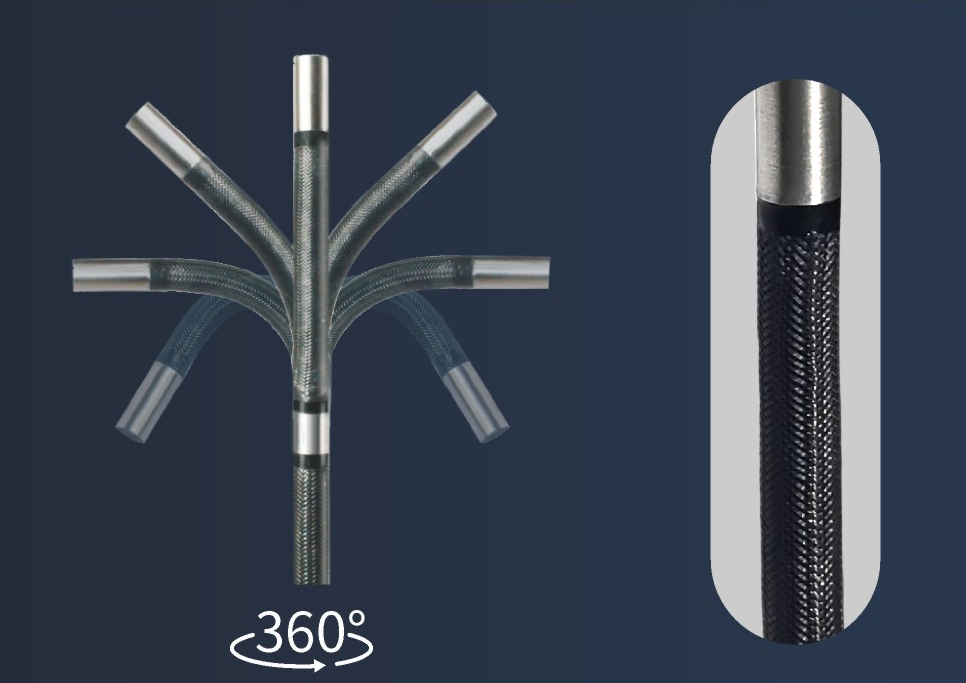The Principle and Implementation of 360-Degree Rotation in Industrial Endoscopes
2023-09-08
Industrial endoscopes are widely used tools for detecting, observing, and capturing images or videos of spaces or equipment that are difficult to access directly. In various industrial sectors such as mechanical maintenance, aerospace, and automotive manufacturing, industrial endoscopes play a crucial role. Among their many features, the ability to perform a 360-degree rotation is especially significant, as it allows operators to observe and inspect targets from all angles, without changing the position of the endoscope. This article aims to provide a detailed explanation of the principles and implementation methods behind the 360-degree rotation in industrial endoscopes.
I. Principles:
The 360-degree rotation in industrial endoscopes primarily relies on the following principles:
1.Mechanical design: Industrial endoscopes typically consist of a flexible probe and an operating handle. To achieve a 360-degree rotation, the mechanical design of the endoscope needs to consider several key elements:
2.Bearing system: The probe of the industrial endoscope is usually connected to the operating handle via a precision bearing system. This bearing system provides smooth rotational movement and can withstand significant axial and radial forces.
3.Drive system: To enable the rotation of the endoscope, a drive system is required. Common drive methods include manual, electric, and pneumatic drives. Manual drives typically involve rotating a handle or knob manually to initiate the rotation. Electric drives utilize electric motors to drive the rotation of the endoscope. Pneumatic drives, on the other hand, utilize air pressure to achieve the rotation.

II. Implementation Methods:
Based on the principles mentioned above, the 360-degree rotation in industrial endoscopes can be achieved through the following implementation methods:
1.Mechanical drive: This is the most common implementation method. By manually rotating the handle or knob, rotational force is transmitted to the bearing system, allowing the endoscope to rotate. This method is simple, reliable, and widely used in various industrial endoscopes.
2.Electric drive: The rotation of the endoscope is achieved by an electric motor. This method offers greater precision and control over the rotation, making it suitable for applications that require high-precision rotation. Electrically driven endoscopes are often equipped with control systems, enabling features such as automatic rotation, positioning, and stopping.
3.Pneumatic drive: The rotation of the endoscope is driven by air pressure. This method is suitable for special environments such as high temperature, high pressure, or explosive environments. Pneumatic-driven endoscopes exhibit high tolerance and flexibility but require a local air supply source.
The 360-degree rotation in industrial endoscopes is achieved through appropriate mechanical design and drive systems. Whether it is through mechanical drive, electric drive, or pneumatic drive, the different implementation methods can cater to diverse application scenarios. With advancements in technology, the rotating systems of endoscopes continue to innovate and improve, offering higher precision, reliability, and convenience, further enhancing the effectiveness and efficiency of industrial endoscope applications.



